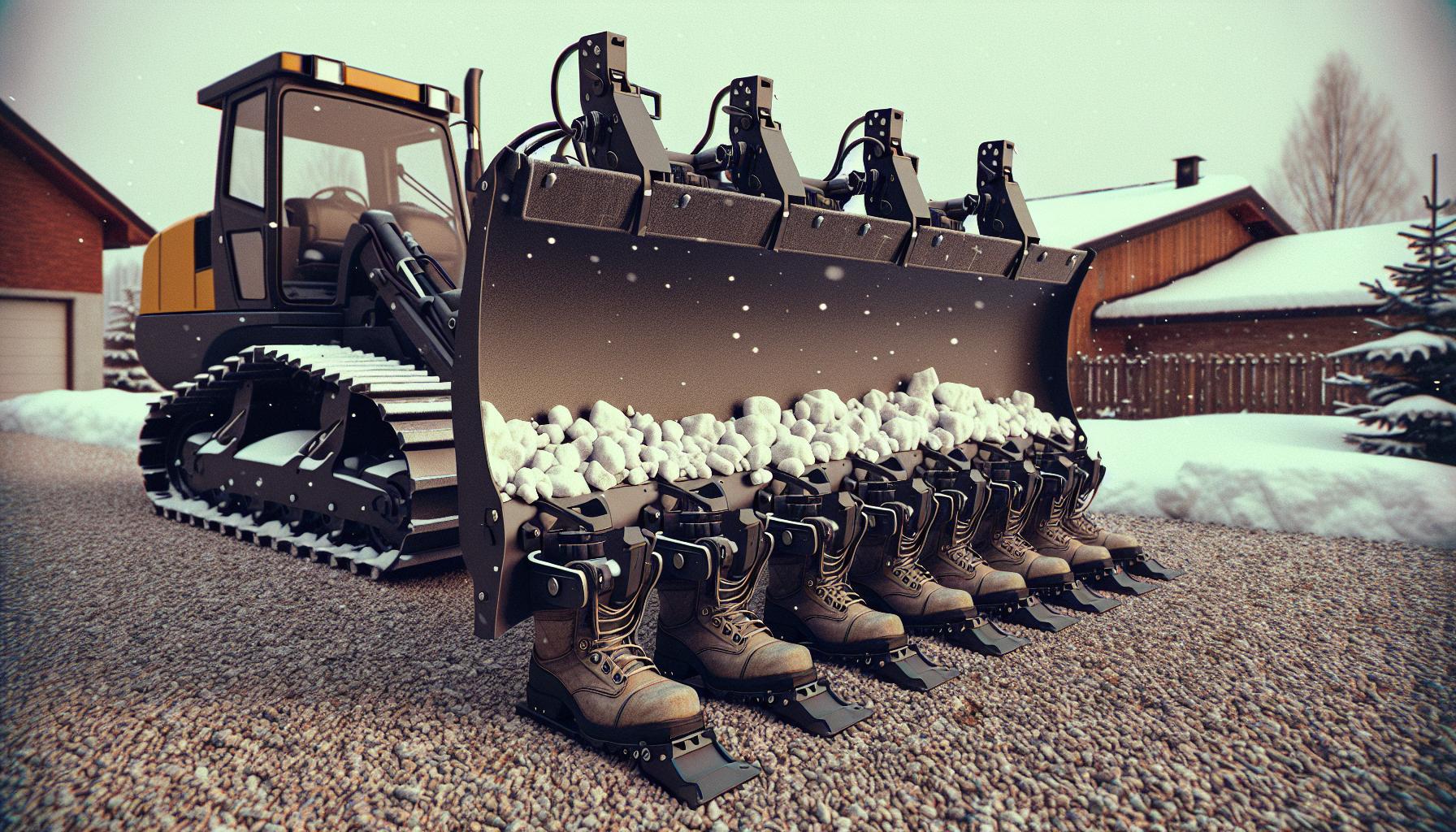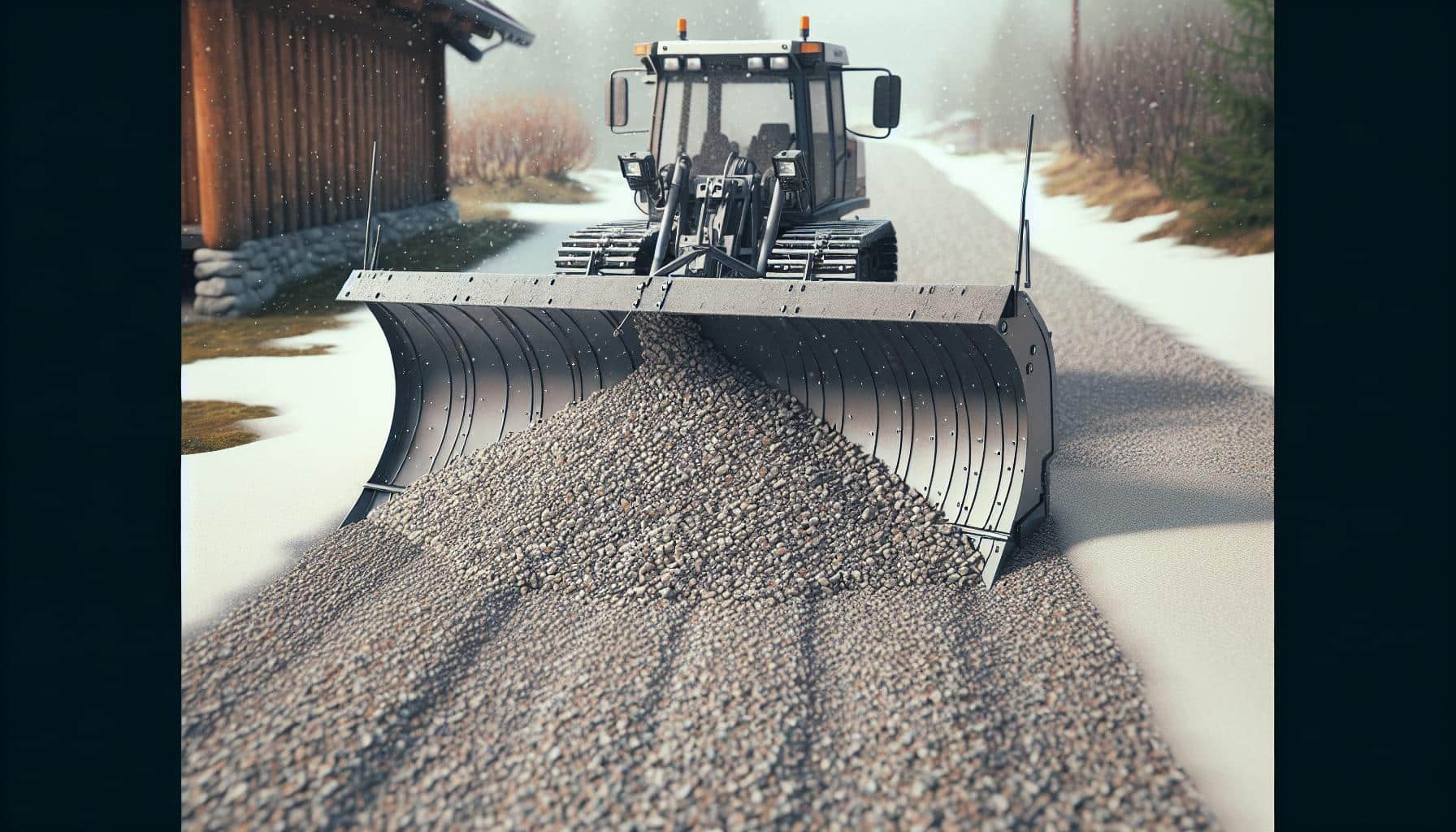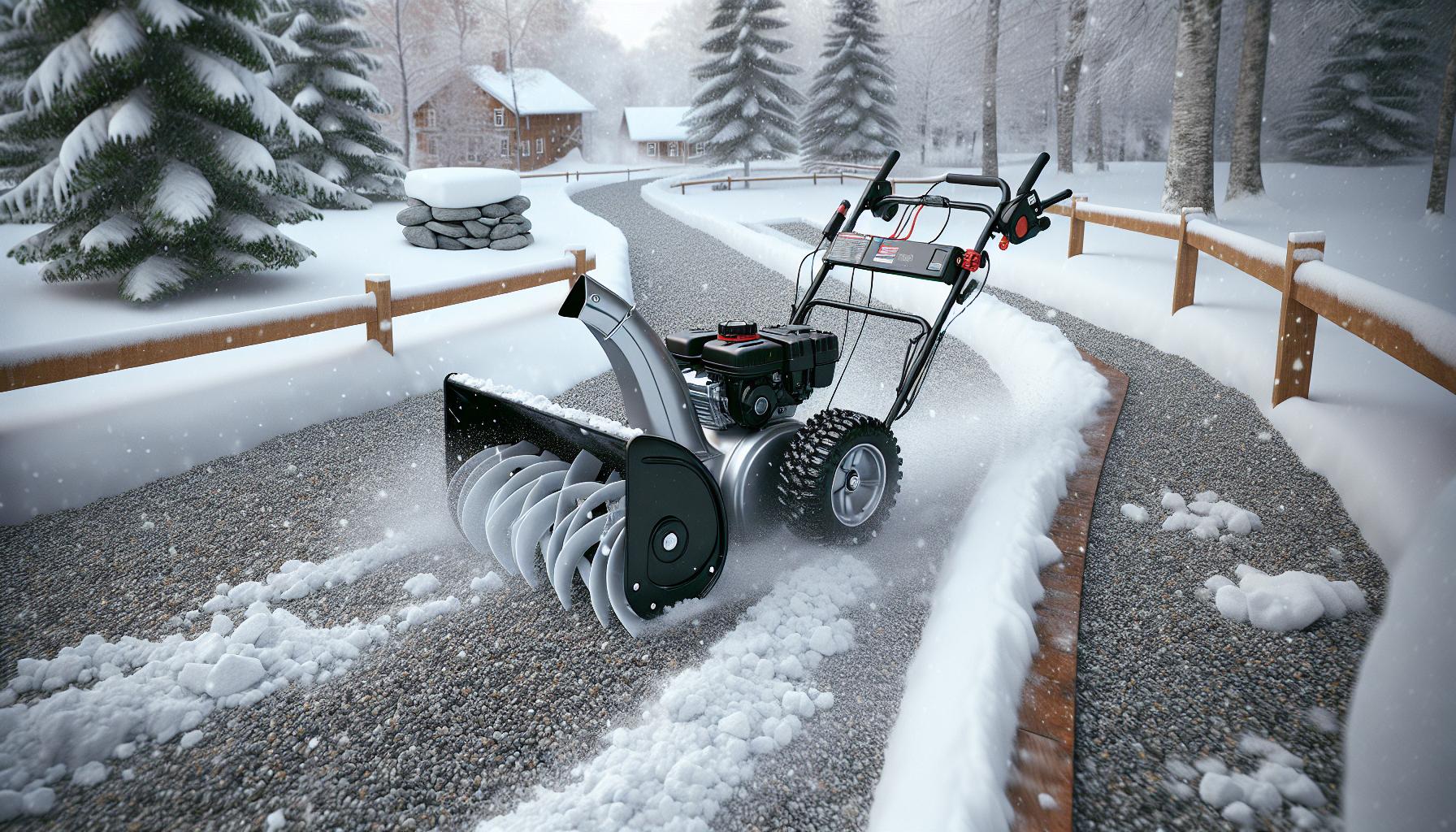
Wondering if you can snow plow a gravel driveway without turning it into a rocky mess? You’re not alone. Gravel driveways pose a unique challenge when it comes to snow removal. Unlike their paved counterparts, gravel surfaces require a delicate balance to remove snow without displacing the gravel.
It’s a common misconception that plowing gravel driveways is an impossible task. In reality, with the right technique and a bit of patience, you can effectively clear snow without redistributing your driveway across the yard. The trick lies in the equipment and approach you choose—something we’ll investigate into to ensure your driveway remains intact and snow-free.
Can You Snow Plow a Gravel Driveway
As you’re exploring ways to manage your property during the winter months, you may wonder about the viability of snow plowing a gravel driveway. Let’s investigate into the pros and cons of undertaking this task to ensure you’re armed with the knowledge to maintain your driveway effectively.
Pros of Snow Plowing a Gravel Driveway
- Maintained Accessibility: One of the primary benefits of snow plowing your gravel driveway is maintaining clear access. This is essential not just for personal convenience but for emergency services should they need to reach your home.
- Prevents Ice Formation: By removing snow, you reduce the likelihood of ice forming as temperatures fluctuate, which can be hazardous to vehicles and pedestrians alike.
- Surface Preservation: With correct technique, such as setting the plow blade at the right height, you can preserve the integrity of the gravel surface while removing snow.
- Cost Efficiency: Investing in a plow attachment may be more cost-effective in the long run compared to hiring snow removal services every season.
- Potential for Gravel Displacement: If not done cautiously, plowing can displace gravel, resulting in additional springtime work to redistribute it properly.
- Equipment Wear and Tear: Plowing gravel driveways can accelerate the wear on plow blades and the vehicle due to the abrasive nature of gravel.
- Risk of Uneven Surfaces: Gravel driveways are typically not as level as paved ones, which can lead to inconsistent snow removal and possible damage to the driveway’s surface.
- Skill Requirement: Efficiently plowing a gravel driveway without picking up gravel requires skill and experience, something a novice might lack initially.
Tips for Snow Plowing a Gravel Driveway

Use the Right Equipment
To get the job done without removing gravel, you’ll need a snow plow attachment or blade specifically designed for gravel surfaces. These specialized blades are often equipped with shoes or wheels that allow you to set the blade height above the gravel, ensuring you’re moving snow and not the driveway itself. Snow plow shoes are essential—they lift the blade just enough to avoid scooping up gravel while still effectively clearing snow. Using the right equipment means you’re less likely to need gravel redistribution come spring.
Clear the Driveway Before Plowing
Removing obstacles is a crucial first step in the plowing process:
- Remove any large debris: Branches, rocks, and other debris can be hidden under the snow and pose a risk to your equipment.
- Mark hidden obstacles: Anything that could obstruct the plowing process, like tree stumps or buried rocks, should be marked with reflective markers or flags.
- Clear entrances and exits: It’s wise to remove snow from these areas first to prevent snow buildup that could block your path later on.
By clearing your driveway, you create a safer environment for plowing and ensure smoother, more effective snow removal.
Adjust the Plow Blade Height
Properly adjusting the plow blade height is vital for protecting your gravel driveway. Set the blade to hover just above the gravel’s surface. This prevents the blade from digging into the driveway and reduces the amount of gravel that gets pushed aside.
- Floating feature: If your plow has one, use the floating feature to allow the blade to adjust to the uneven terrain of a gravel surface.
- Angle the blade: Push snow to the side efficiently by angling the blade, which also minimizes the risk of catching and moving gravel.
- Maintain a steady height: Check your blade height regularly during the snow removal process, especially after significant snowfall or when dealing with ice patches.
Consistently monitoring and adjusting your equipment will not only streamline the plowing process but also help maintain the integrity of your gravel driveway throughout the winter.
Important Considerations for Snow Plowing a Gravel Driveway Proper snow removal strategy is crucial when you’re dealing with a gravel driveway. There are several critical considerations to keep in mind that’ll help ensure effective plowing while preserving your driveway’s integrity.
Minimize Contact with the Gravel Surface
Important Considerations for Snow Plowing a Gravel Driveway

When you’re gearing up to plow snow, your primary concern should be to minimize the snow plow’s contact with the gravel. The less contact the blade has with the gravel, the less likely you are to displace your driveway’s surface. Follow these guidelines:
- Set the Plow Height: Keep the blade at least half an inch above the gravel surface. This height setting provides a buffer between the blade and the gravel, reducing the chance of picking up stones.
- Select the Proper Equipment: A snow plow attachment that’s specifically designed for gravel can make a substantial difference. Features like a ‘floating’ option allow the blade to adjust to the contour of the ground.
- Use Skid Shoes to decrease the potential of your plow digging into the gravel. Adjust these so the blade hovers just above the driveway.
Each of these steps helps protect your driveway’s surface throughout the snowy months.
Avoid Plowing Unnecessary Areas
Efficiency is key to a smooth snow removal process. Focus your efforts where they’re needed most:
- Plan Your Route: Establish a clear plowing route that avoids unnecessary areas like lawns to prevent the disturbance of areas outside the driveway.
- Maintain Boundaries: Use markers to define the edges of your driveway. This will help in preventing the spread of gravel to adjacent areas.
- Consider Future Snowfalls: Leave ample space beside the driveway for future snow storage. This foresight prevents issues during subsequent plows after heavy snowfalls.
By being mindful of where you plow, you save time and protect your world from unwanted changes.
Be Mindful of Drainage
Proper snowmelt drainage is important to maintain the gravel driveway’s structure and prevent water damage. Here are some tips to ensure effective drainage:
- Avoid Blocking Drainage Pathways: Ensure that the snow you’re plowing doesn’t block natural or man-made drainage routes.
- Create Melt Channels: If possible, plow in a manner that leaves channels for the melted snow to drain away from your driveway.
- Monitor Snowmelt: Keep an eye on the melting process and make necessary adjustments to your plow strategy to help better drainage.
Integrating these points in your snow plowing routine can reduce the likelihood of water accumulation and the associated risks to your gravel driveway during the thawing season.
Alternative Methods for Clearing Snow from a Gravel Driveway

When it comes to clearing snow from your gravel driveway, traditional plowing isn’t your only option. Let’s explore some alternative methods that can effectively remove snow while safeguarding your gravel.
Using a Snowblower
A snowblower can be a game-changer for your winter routine. Here’s why:
- Efficiency: A tractor-powered snowblower can transform a challenging job into a manageable one with less manual labour.
- Precision: Adjustable skid shoes allow you to set the exact height, leaving about 1 inch of snow to protect the gravel beneath.
- Protection: Proper adjustment ensures gravel is not caught and displaced, protecting both your driveway and adjacent grassy areas.
For instance, by pairing a Frontier SB1174 3-Point Snowblower with a John Deere 4052M Compact Utility Tractor, you’re equipped with a robust machine that can handle substantial snowfall without disturbing your driveway’s integrity.
Shoveling or Using a Snow Pusher
While more labor-intensive, shoveling is a traditional and precise way to clear snow from delicate areas like a gravel driveway. Here are the advantages:
- Control: You have complete command over the amount of snow lifted, which is crucial for avoiding gravel displacement.
- Cost-Effective: No need for fuel or expensive machinery—just your time and physical effort.
- Accessibility: Shovels are readily available and can be utilised by most able individuals.
A snow pusher, particularly those designed for gravel driveways like the Tar River CSP60, offers a balance between the efficiency of a snowblower and the control of shoveling. This carry out won’t pack snow like a standard bucket, so enhancing efficiency. Users report significant time savings compared to traditional buckets, without compromising the driveway’s surface.
Remember, each method has its strengths, and your choice depends on conditions and personal preference. Whether it’s the snowblower’s capacity for heavy lifts or the shovel’s meticulous touch, you’re armed with knowledge to keep your gravel driveway clear this winter.
Conclusion
Tackling snow on your gravel driveway doesn’t have to be a challenging job. Armed with the right equipment—whether it’s a snowblower with adjustable skid shoes or a trusty shovel—you’re well-equipped to maintain your driveway during the winter months. Remember, it’s all about finding the balance between preserving your gravel and efficiently clearing the snow. Choose the method that best suits your needs and you’ll find that keeping a clear path is perfectly manageable, even with the challenges a gravel surface presents. Stay warm and safe as you keep your driveway snow-free this season!
Colin Macmillan is a seasoned entrepreneur and the CEO of Riverwood Landscape, a leading landscaping company based in Canada. He has been at the helm of the company since leaving high school, demonstrating his strong leadership skills and business acumen.
Colin’s expertise lies in various aspects of landscaping, including lawn care, interlocking, sod installation, and commercial maintenance. His hands-on approach and dedication to the craft have been instrumental in building Riverwood Landscape into a reputable brand.
One of his most notable achievements is the creation of a successful landscape franchise that services multiple locations. This accomplishment underscores his strategic thinking and ability to scale operations effectively.
Colin has also had the privilege of working with Guelph Hospital for landscaping and maintenance, a testament to the trust and reliability that his company has earned over the years.
His professional mission is to offer the best services and experiences for customers, a goal that he tirelessly pursues. Colin’s commitment to excellence and customer satisfaction continues to drive the growth and success of Riverwood Landscape.








